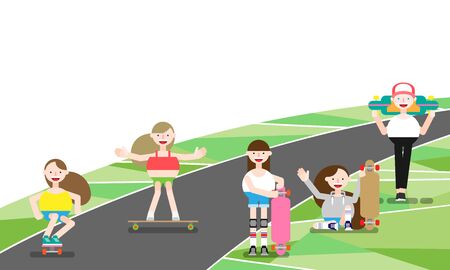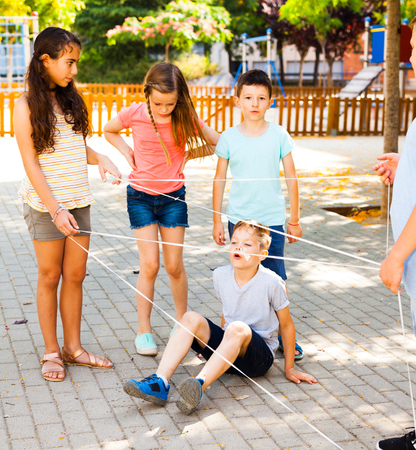Introduction: Why Arts and Crafts Matter in Rehabilitation
Across the UK, children facing rehabilitation after illness, injury, or long-term health conditions encounter a unique set of challenges. From physical limitations to emotional hurdles like anxiety and loss of confidence, the road to recovery can often feel daunting and isolating for young people. In recent years, however, there has been a growing recognition of the powerful role that creative activities—particularly arts and crafts—can play in supporting these children on their journey. More than just a way to pass the time, engaging in arts and crafts offers a therapeutic outlet that helps to build resilience, foster social connection, and develop practical skills. Increasingly, therapists, educators, and families across Britain are turning to these hands-on activities as vital tools in paediatric rehabilitation programmes. This shift reflects not only emerging research but also countless real-life stories from children whose confidence and abilities have been transformed through creativity. As we delve deeper into this topic, we’ll explore exactly why arts and crafts matter so much in the context of rehabilitation—and how they’re making a tangible difference to children’s lives up and down the country.
2. Cultural and Educational Context in the UK
In the United Kingdom, the integration of arts and crafts into children’s rehabilitation is deeply influenced by cultural values, educational frameworks, and local community initiatives. The British education system recognises the importance of holistic development and actively promotes creativity, resilience, and well-being through structured curriculums and extracurricular programmes. This approach is not merely about artistic skill acquisition; it embodies a broader commitment to nurturing self-confidence and emotional intelligence in young people.
British Values Supporting Arts and Crafts
Core British values such as mutual respect, tolerance, individual liberty, and democracy are often reflected in how schools deliver arts and crafts activities. These values help cultivate inclusive environments where every child is encouraged to express themselves, explore new ideas, and participate regardless of ability or background. For children undergoing rehabilitation, this supportive atmosphere can be transformative—reducing isolation, building social bonds, and promoting a sense of belonging.
School Curriculums: Embedding Creative Practice
The national curriculum across England, Scotland, Wales, and Northern Ireland places significant emphasis on creative subjects from an early age. Art and design are statutory subjects in primary and secondary education, with opportunities for hands-on learning woven into daily lessons. Many schools offer dedicated time for project-based work that encourages collaboration, experimentation, and problem-solving—key skills for both personal development and recovery during rehabilitation.
| Nation | Curriculum Focus | Arts & Crafts Integration |
|---|---|---|
| England | National Curriculum | Compulsory art & design for Key Stages 1–3; cross-curricular links to PSHE (Personal, Social, Health & Economic Education) |
| Scotland | Curriculum for Excellence | Expressive arts as one of eight core areas; focus on creativity across disciplines |
| Wales | Curriculum for Wales 2022 | “Expressive Arts” Area of Learning & Experience integrates art, music, drama & dance |
| Northern Ireland | The Northern Ireland Curriculum | Emphasis on “The Arts” from Foundation Stage onwards; practical craft activities embedded throughout |
Local Initiatives: Community-driven Support
A wealth of local initiatives further enriches children’s access to arts and crafts during rehabilitation. Councils, charities like Mind or Barnardo’s, NHS trusts, and grassroots organisations frequently run workshops tailored for children with additional needs—often in collaboration with hospitals or special schools. These initiatives aim to bridge gaps in formal provision, offering safe spaces where children can try new techniques at their own pace while benefiting from peer support.
The Impact on Children’s Well-Being
This multi-layered support structure ensures that arts and crafts are not just seen as ‘extras’ but as essential components of care and education. By embedding creative experiences within both formal education and community life—and aligning them with foundational British values—the UK provides a model where children’s confidence and skills can flourish even through challenging times.

3. Building Self-Confidence through Creativity
One of the most remarkable benefits of arts and crafts within children’s rehabilitation is their unique ability to nurture self-confidence and emotional resilience. In British rehabilitation settings, creative activities are more than just pastimes—they become lifelines that offer children a sense of purpose and progress during challenging periods.
Practical experiences from various NHS paediatric wards and specialist rehab centres in the UK illustrate how simple creative tasks, such as painting, collage making, or clay modelling, can spark a child’s imagination and provide tangible milestones of achievement. For many children facing physical or emotional challenges, completing an art project—no matter how modest—gives them something concrete to be proud of. This feeling of accomplishment is crucial, especially when so much else may seem out of their control.
Staff often encourage a “can-do” attitude by celebrating every effort, not just the end result. For example, children working on group murals at London’s Great Ormond Street Hospital experience both individual pride and the sense of belonging that comes from contributing to a collective masterpiece. Therapists also report that crafting sessions help children externalise worries and frustrations in a safe way, which in turn boosts their confidence to try new things.
Furthermore, these creative exercises are intentionally designed to be accessible regardless of ability level. Adaptations such as chunky brushes for easier grip or tactile materials for sensory engagement ensure that every child can participate fully. The emphasis is always on expression over perfection—a value deeply embedded in contemporary British approaches to inclusive education and therapy.
The practical impact is clear: as children see their ideas take shape and receive positive feedback from peers, family members, and staff, they begin to recognise their own capabilities. Over time, this growing self-assurance translates into greater willingness to tackle other rehabilitation goals, fostering a resilient mindset that supports long-term recovery.
4. Developing Key Skills for Life
Engaging children in arts and crafts during their rehabilitation journey is more than just a creative pastime; it serves as a vital platform for developing essential life skills. Through hands-on activities, children are offered opportunities to practise both fine motor skills and social interaction, laying the groundwork for successful integration into school and wider community settings.
Building Fine Motor Skills Through Creative Tasks
Arts and crafts projects often require children to use small tools, manipulate materials, and execute precise movements. For example, threading beads, cutting with safety scissors, or moulding clay all contribute to strengthening hand-eye coordination and dexterity. These foundational skills are crucial not only in artistic endeavours but also in everyday tasks such as writing, buttoning clothing, or using utensils.
Examples of Fine Motor Activities and Their Benefits
| Activity | Fine Motor Skill Developed | Practical Outcome |
|---|---|---|
| Drawing with crayons or pencils | Grip strength, control | Improved handwriting ability |
| Mosaic or collage work | Pincer grasp, precision | Better focus on detail-oriented tasks |
| Clay modelling | Finger strength, bilateral coordination | Easier self-care routines (e.g., tying shoelaces) |
| Cutting shapes from paper | Scissor skills, hand stability | Enhanced classroom participation |
Nurturing Social Skills in Group Settings
The collaborative nature of many arts and crafts sessions encourages children to communicate, share resources, and express themselves within a supportive group environment. These interactions help develop essential social skills such as listening, turn-taking, teamwork, and empathy. In my experience working alongside occupational therapists in the UK, I have witnessed how structured art groups can gently coax even the most reserved children out of their shells.
Key Social Skills Fostered by Arts and Crafts Activities:
- Communication: Discussing ideas or explaining artwork builds confidence in verbal expression.
- Cooperation: Working on joint projects teaches negotiation and compromise.
- Respect for Others: Appreciating different creative approaches fosters inclusivity—an important British value in today’s diverse classrooms.
- Emotional Regulation: Art provides a safe outlet for expressing feelings, helping children manage anxiety or frustration.
Smoothing the Path to School and Community Integration
The skills nurtured through arts and crafts play an instrumental role when children transition back into mainstream educational settings or participate in local clubs. Not only do they arrive better equipped for academic tasks and peer relationships, but they also possess a sense of achievement that underpins resilience. Ultimately, creative engagement empowers children to thrive both inside and outside the classroom—something I have seen transform lives time and again across various UK communities.
5. Art as a Medium for Emotional Expression and Communication
In the context of children’s rehabilitation, arts and crafts offer a unique and invaluable medium for emotional expression and communication, particularly within the multicultural landscape of Britain. For many young people—especially those who may struggle to articulate their feelings verbally, whether due to trauma, language barriers, or developmental challenges—creative activities become a safe haven for processing complex emotions. Through painting, drawing, modelling with clay, or collage-making, children can express what words cannot convey. This non-verbal channel is often transformative, enabling children from diverse backgrounds to share their inner worlds without the pressure of finding ‘the right words’.
The Power of Non-Verbal Expression
British classrooms and rehabilitation centres are increasingly multicultural, reflecting the rich tapestry of communities across the UK. In such settings, the ability to communicate through art transcends linguistic differences. Children who are new to English or come from different cultural backgrounds may feel isolated or misunderstood. Arts and crafts provide a common ground where they can participate fully and confidently. This shared experience not only nurtures self-confidence but also fosters empathy among peers as they interpret and appreciate each other’s creations.
Building Bridges in Diverse Communities
Art projects often incorporate elements from various cultures, allowing children to celebrate their heritage while learning about others’. This mutual exchange promotes inclusion and respect—a cornerstone of British values. For instance, collaborative murals or cultural crafts sessions encourage dialogue about traditions and personal stories. Such activities help break down social barriers and create a sense of belonging among children who might otherwise feel marginalised.
Supporting Emotional Well-being
For children dealing with anxiety, grief, or trauma, engaging in creative work can have therapeutic effects. The process of making something tangible gives them a sense of control and accomplishment. It also provides an outlet for releasing pent-up emotions in a constructive way. Rehabilitation practitioners across the UK increasingly recognise the importance of art therapy techniques within recovery programmes, appreciating how these approaches support both emotional healing and skill development.
Ultimately, arts and crafts play a crucial role in helping children navigate their feelings and connect with others—particularly in Britain’s wonderfully diverse communities. By valuing creativity as a form of communication, we empower young people to find their voices, build resilience, and thrive during their rehabilitation journeys.
6. Collaborative Projects: Fostering Inclusion and Belonging
Reflecting on my hands-on experience within children’s rehabilitation settings in the UK, I have witnessed first-hand how group-based arts and crafts projects serve as a powerful tool for breaking down social barriers. When children from diverse backgrounds come together to collaborate on creative tasks—whether it be a mural for the local community centre or crafting decorations for a school event—they are offered a rare chance to see beyond their differences. These activities create an environment where everyone’s contribution is valued, regardless of ability or background, fostering a real sense of inclusion and belonging.
Group art projects naturally encourage cooperative learning. Children learn not only new artistic techniques but also vital social skills such as communication, negotiation, and empathy. In British schools and rehabilitation centres, it’s common to observe shy children finding their voice through teamwork, or those who struggle academically gaining recognition for their creativity. This mutual support nurtures confidence and allows each child to take pride in their achievements.
What stands out in these collaborative sessions is how they gently challenge stereotypes and preconceptions. A child with limited mobility may lead the way with innovative ideas; another who speaks English as an additional language might excel in visual storytelling. These shared victories help every participant feel seen and appreciated, reinforcing the idea that everyone belongs and has something unique to offer.
Ultimately, group-based arts activities do more than develop artistic skill—they lay the foundation for lasting friendships and community spirit. In a society as diverse as Britain’s, such experiences are invaluable for building bridges between cultures and abilities, nurturing a more inclusive generation from the ground up.
7. Conclusion: Looking Ahead for Arts in Rehabilitation
The evolving landscape of children’s rehabilitation in the UK has increasingly recognised the profound impact of arts and crafts on young people’s confidence, emotional wellbeing, and skill acquisition. A growing body of British research, including studies by the Arts Council England and NHS pilot projects, consistently highlights how structured creative activities foster not only motor skills and cognitive development but also vital self-belief and social interaction among children facing physical or emotional challenges.
Recent evidence shows that integrating arts-based interventions into rehabilitation programmes leads to greater engagement and improved outcomes for children. For example, projects across London, Manchester, and Glasgow have demonstrated that art therapy sessions reduce anxiety levels, while collaborative crafts help children regain dexterity after injury or surgery. These positive findings are echoed in feedback from families and health professionals alike, who note increased motivation and resilience in young participants.
Looking ahead, there is a clear opportunity for the UK to embed arts and crafts more deeply into mainstream paediatric rehabilitation services. This would mean not just offering occasional creative workshops but weaving creativity into the fabric of therapeutic plans—partnering with local artists, museums, and community groups to ensure sustained access to high-quality resources and inspiration. There is also scope for further research to fine-tune best practices for different conditions and age groups, ensuring every child can benefit from a tailored approach.
In summary, while much progress has been made, the future holds even greater promise if we continue championing the role of arts and crafts within children’s rehabilitation. By embracing creativity as a core element of healing and development, British practitioners can help nurture not only skilled hands but also confident hearts—empowering the next generation to flourish both inside and outside the clinic.


